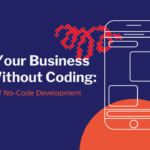
Education is the foundation of a society, and it has been considered an essential aspect of human development since ancient times. Traditional education is still widely used, but it faces several challenges that hinder its effectiveness. In this article, we will discuss the biggest challenges of traditional education and explore ways to overcome them.
- Lack of Individualized Learning
Traditional education typically follows a one-size-fits-all approach, which can be problematic for students who learn at different paces or have different learning styles. This approach does not consider the unique needs and strengths of each student, leading to frustration and disengagement.
Solution: One way to address this challenge is by implementing personalized learning plans. Teachers can use technology to create customized learning experiences for each student, tailoring the content and pacing to fit their specific needs. This approach allows students to learn at their own pace and engage with the material in a way that works best for them.
- Limited Access to Learning Resources
Traditional education is often limited to classroom instruction and textbooks, which can be insufficient in providing a comprehensive understanding of a topic. Additionally, some schools and students do not have access to the latest educational resources and technologies, which can hinder their learning experience.
Solution: Technology can help address this challenge by providing access to a wealth of resources beyond the classroom. Teachers can use online learning platforms to provide students with access to videos, interactive simulations, and other multimedia resources that supplement classroom instruction. Schools can also invest in technology, such as e-books and tablets, to ensure that all students have equal access to educational resources.
- Teacher-Centered Instruction
Traditional education typically revolves around teacher-centered instruction, where the teacher is the primary source of knowledge and students are expected to absorb and regurgitate information. This approach can stifle creativity and critical thinking, leading to a lack of engagement and interest in learning.
Solution: To overcome this challenge, teachers can adopt student-centered learning approaches. This approach places the student at the center of the learning experience, encouraging them to ask questions, explore, and engage in hands-on activities. Teachers can also facilitate discussions and group projects to encourage collaboration and critical thinking.
- High Cost of Education
Traditional education can be expensive, especially for students attending private institutions or universities. The high cost of education can be a barrier to entry for many students, limiting their opportunities for higher education and personal development.
Solution: One way to address the high cost of education is by offering more affordable alternatives, such as online courses, community college, and vocational training programs. These options provide students with access to education without the burden of high tuition fees. Additionally, scholarships and financial aid programs can help make education more accessible to students from disadvantaged backgrounds.
- Lack of Practical Skills
Traditional education often focuses on theoretical knowledge, which can be useful but may not provide students with the practical skills needed for real-world situations. This can lead to a skills gap, where students are not adequately prepared for the workforce.
Solution: To address this challenge, schools can incorporate more hands-on learning experiences and practical applications into the curriculum. This can include internships, apprenticeships, and project-based learning, where students can apply their knowledge in real-world settings. Additionally, schools can partner with local businesses and industries to provide students with opportunities for practical training and job placement.
Conclusion
Traditional education has been the backbone of learning for centuries, but it faces several challenges that can hinder its effectiveness. By addressing these challenges, we can create a more inclusive and effective educational system that provides students with the skills and knowledge they need to succeed. Implementing personalized learning plans, utilizing technology, adopting student-centered learning, providing affordable alternatives, and incorporating practical applications into the curriculum can all help overcome the challenges of traditional education







